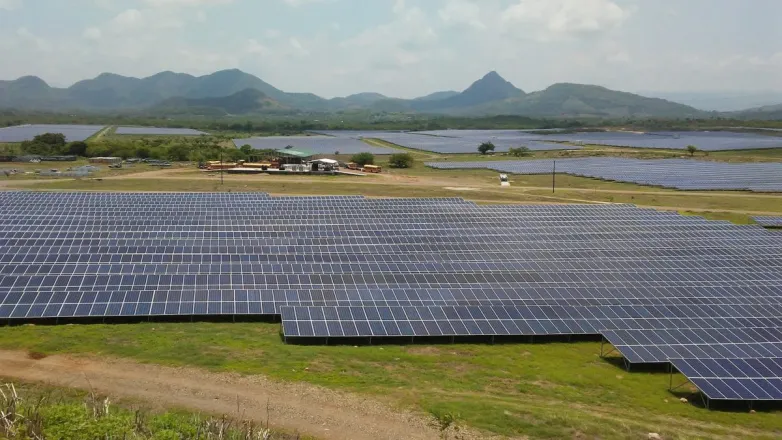France added just 397 MW of solar in six months
Sep 6, 2019 08:43 AM ET
- At the end of June, France’s installed PV capacity topped 9.3 GW for a 4% increase on the figure recorded at the end of December. Only 397 MW of new capacity was put into operation, however, a much lower figure than the 490 MW deployed in the same period of 2018. Why?

The first six months of the year saw a marked shift in the location of new French solar generation capacity, with 18 MW of new projects in Normandy marking a 12% expansion in the northern region.
The sunnier south is the powerhouse of French solar but a slowing market saw only 394 MW of new capacity added across France and Corsica in the six-month period, plus a further 3 MW of new projects in the nation’s overseas territories.
Those new generation assets took France to a cumulative 9.3 GW of capacity, with 8.9 GW on the mainland and Corsica and 392 MW in the overseas departments.
France’s PV systems generated 6 TWh during a particularly sunny first half, especially in February – 23% more than in the same period of last year, when 4.8 TWh was produced. “Solar production accounts for 2.4% of French electricity consumption, up 0.5 [of a] percentage point compared to the previous year over the same period,” said the French government in an update.
Small scale dominates
Of the 397 MW of newly installed solar – a 19% fall on the same period of 2018 – more than half (52%) came from installations with a capacity of more than 250 kW, and 11% came from plants with a capacity of less than 9 kW. Just 1% of the new plants had a capacity greater than 250 kW, 87% had a capacity of less than 9 kW and 12% a capacity of 9-250 kW.
At that rate, will the targets set in the recently released Multiannual Energy Program – the Programmation Pluriannuelle de l’Énergie, or PPE – be achieved?
“The power of projects in the queue has increased by 19% since the beginning of the year to 5.4 GW, including 1.5 GW with a signed connection agreement,” stated the government.
David Callegari, founder and MD of installer In Sun We Trust, responded on Tuesday to second-quarter PV connection figures published by electricity distribution company Enedis. “The French seem to be turning away from photovoltaics again,” said Callegari. “In the residential segment (less than 9 kW systems) the decline is brutal: only 4,355 installations in the second quarter of 2019, compared to 6,359 in the first quarter. It’s exactly one-third less (-33.4%).”
Red tape and fraud
The managing director put the reverse down in part to a large number of scams – almost 10,000 last year, according to the Association of Photovoltaic Electricity Producers – and also to red tape. “The current regulatory framework is sufficiently favorable,” he added. “And especially since it is part of a trend of a sharp rise in electricity prices (up 7.2% in 2019), which has mechanically improved the profitability of self-consumption. The problem is that this framework is illegible, riddled with absurd threshold effects and unnecessary subtleties.”
While small scale arrays are driving French solar, the contribution which could be made by large scale projects commissioned in 2016 tenders held by the Energy Regulatory Commission (CRE) should not be overlooked.
“The pace of development of the solar photovoltaic industry is stagnating at a level insufficient to achieve the objectives of PPE for 2023,” a spokesperson for renewable energy association SER-Soler told pv magazine. “To reach the middle PPE target of 2023, it is necessary to connect about 450 MW per quarter.”
Optimistic outlook
The association cited two factors to explain the decline in the pace of connections. It observed the unit of measurement indicated in the PPE – connected wattage – does not coincide with the unit used in tenders: peak wattage. Between the two, the difference in ‘loss’ is around 20%. A standardization of the unit used would make it possible to ensure the capacity provided for in the calls for tenders corresponded to the capacities connected.
The association added, the CRE 4 call for tender for large scale solar required building permits – a formality which delayed some projects. That translated into a lower number of connected projects in the first half of 2019, compared to the same period of last year, when most of the projects allocated under the 1.1 GW CRE 3 tender were connected.
SER-Soler estimates nearly 1 GW of PV project capacity will be connected this year and predicts the volume will accelerate next year, when a further 1.5-1.7 GW will come online, or in 2021, when the figure is expected to be 2-2.4 GW.
Also read

